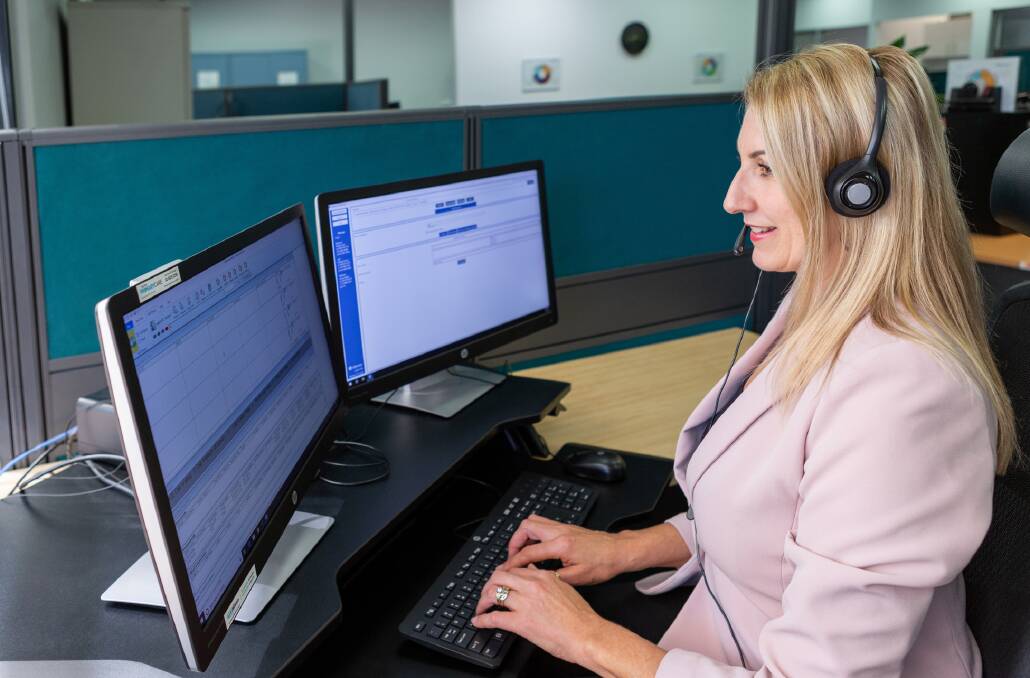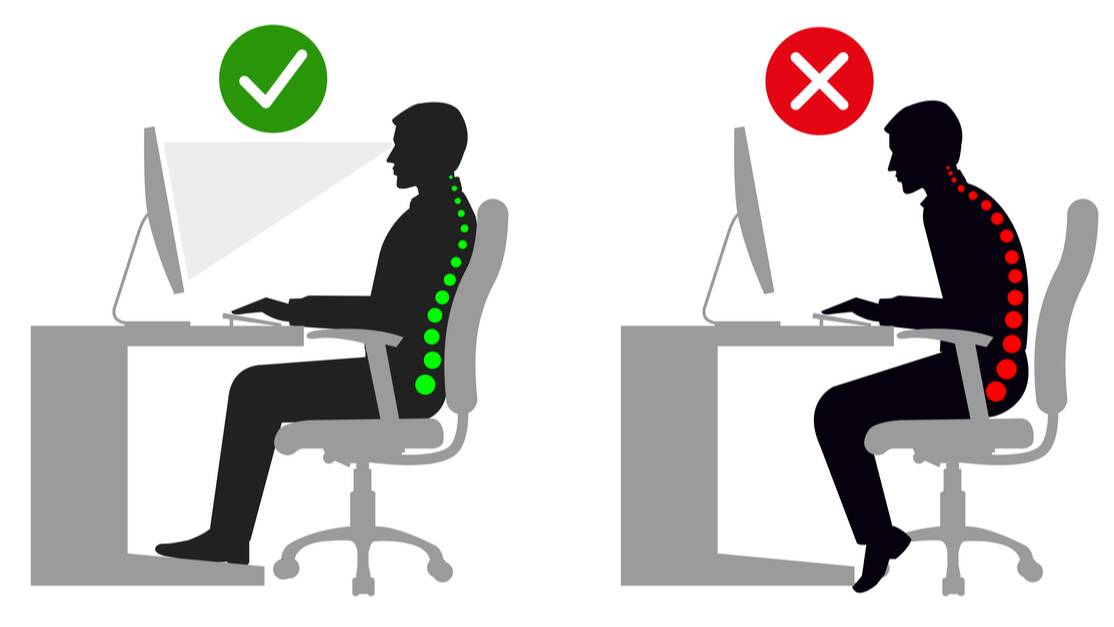Is work a pain in the neck? Tips for a healthier workstation

This is branded content for Hunter Primary Care.
It's a fact of life that many of us spend a mighty chunk of our working day sitting at a desk.
It's also a fact that unless you're careful, that desk, the chair you sit on and the position of the computer you tap away at could be why you feel achy, stiff and exhausted at the end of the work day, and are filling your diary with appointments at the physio.
"If your workstation's not correctly set up for you specifically, lots can go wrong," said Jess Ryan, an Occupational Therapist with Newcastle's Hunter Primary Care.
"Particularly now, with so many people working from home, we're hearing lots of reports of muscular injuries, back pain, neck pain, headache, repetitive strain injuries, exacerbation of previous injuries, sensitivity to light...."
"As well as possibly causing serious physical problems, a workspace that doesn't encourage good posture means you're uncomfortable, you're less able to concentrate, and you're constantly having to get up, so you're not operating at your optimum performance level."
The good news is that working at a desk doesn't have to be a pain in the neck (or back, or shoulders, or head). Taking a few minutes to organise your workspace correctly can be a valuable investment in your health and wellbeing, and productivity.
With World Day for Safety and Health at Work coming up on April 28 we asked Ms Ryan for some tips for setting yourself up for your most comfortable and pain-free way to work.
"This is a skill everyone needs these days when we are always changing between workstations, between home, the office, the cafe, the car. Once you understand the principles you can adapt them to suit your needs," she said.
1 Your chair
Ms Ryan said the most common mistake people make is in the positioning of their chair.
"Every person I review needs to make adjustments to their chair," she said.
"It's all about getting the height right - most people sit too low - which affects their ability to freely use the keyboard. If your feet cannot reach the floor when the chair is at the correct height use a footrest for support.
"Your elbows need to be positioned at 90 degrees, with your shoulders and forearms relaxed, and with a minimal bend in your wrists when working on the computer."

2 Your back
The right support for your back is vital.
"You need to make sure you get the tilt of the backrest right so you are sitting upright and also that you have lumbar support for your lower back," Ms Ryan said.
"I know when I have it right because people say it just feels great."
3 Your monitor
Having a monitor that's too low, too high or too far away are common mistakes.
It should be placed in front of you so that the top of the screen is at eye level or just below. It should be approximately one arm length away from you.
"Many people like to have their monitor too far away but at the end of the day their eyes get tired, and as they get tired they lean forward on the desk," Ms Ryan said.
"And if the height isn't right you're constantly looking up or down and that puts strain on your neck. Lots of people report neck pain and shoulder pain and that could be avoided by something as simple as adjusting the monitor."

4 Your keyboard and mouse
Your keyboard and mouse should be on the same level, straight in front of you and at least 10 to 15cm away from the desk edge to provide forearm support. Your mouse should be parallel to the keyboard.
"If you're working on a laptop you need to raise it up so that again the top of the monitor is at eye level - you don't want to be looking down or be slouching over," said Ms Ryan.
"Very importantly, if you're going to be using a lap top for an extended period I recommended you use a separate keyboard and mouse with a laptop raiser.
"Using such accessories will assist with achieving correct ergonomic setup regardless of where you are working, increase work performance and prevent discomfort and injuries related to poor posture."
Hunter Primary Care has been providing Aboriginal, Disability, General and Mental Health and wellbeing services to Newcastle and the Hunter for almost 30 years.
The not-for-profit organisation offers Level 2 NDIS Support Coordination to assist clients to establish contact with providers and organise routines and appointments, as well as Level 3 Specialist Support Coordination for clients with complex circumstances. This specialist level of support includes Allied Health in the speciality areas including Dietitians, Exercise Physiologists, Occupational Therapists, Social Workers, and Registered Nurses.
You can find out more by visiting the Hunter Primary Care website or calling the team on (02) 4925 2259.
This is branded content for Hunter Primary Care.


